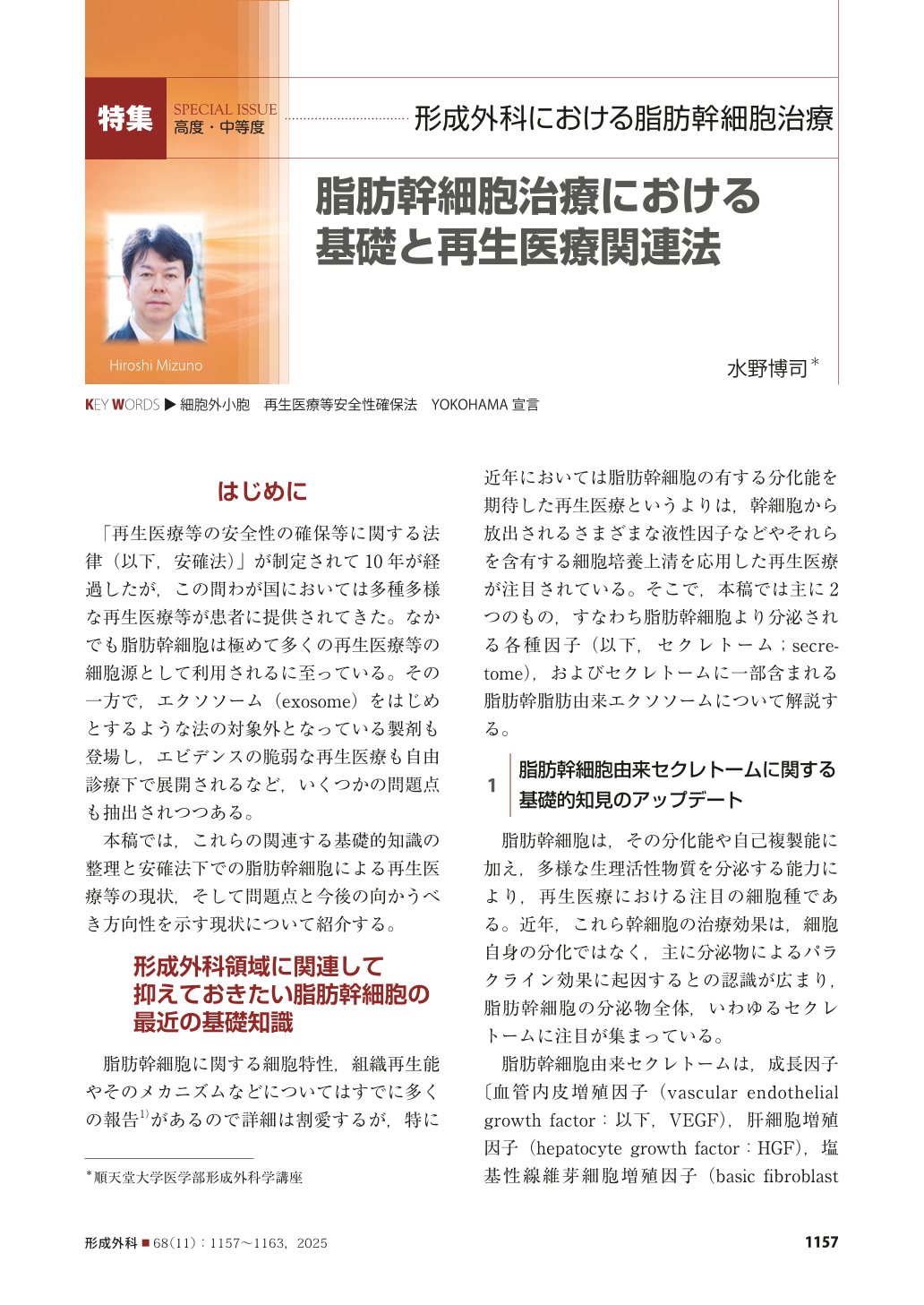Japanese
English
- 有料閲覧
- Abstract 文献概要
- 1ページ目 Look Inside
はじめに
「再生医療等の安全性の確保等に関する法律(以下,安確法)」が制定されて10年が経過したが,この間わが国においては多種多様な再生医療等が患者に提供されてきた。なかでも脂肪幹細胞は極めて多くの再生医療等の細胞源として利用されるに至っている。その一方で,エクソソーム(exosome)をはじめとするような法の対象外となっている製剤も登場し,エビデンスの脆弱な再生医療も自由診療下で展開されるなど,いくつかの問題点も抽出されつつある。
This article provides an overview of the basic scientific knowledge and legal framework concerning the applications of adipose-derived stem cell (ADSC) therapy in the field of plastic and reconstructive surgery. Recent advances have shifted the focus from the differentiation potential of ADSCs to their paracrine effects, particularly the effects via secretomes and extracellular vesicles including exosomes. These cell-free therapies are gaining attention for their regenerative potential in wound healing, skin rejuvenation, and tissue repair.
Under Japanʼs Act on the Safety of Regenerative Medicine, there has been a rapid increase in the number of approved ADSC-based treatments, especially the Type II therapies applied in aesthetic and reconstructive procedures. However, there is growing concern over the proliferation of unverified therapies lacking scientific evidence. In response, the Japan Society for Regenerative Medicine released the ʻYOKOHAMA Declaration 2025,ʼ which emphasizes the need to distinguish scientifically validated “explorative therapies” from “uninvestigated therapies,” which are conducted without proper oversight or data collection.
The Declaration introduced global-first clinical guidance for the use of extracellular vesicles, and it calls for enhanced transparency, ethical accountability, and standardization in clinical practice. The Declaration also highlights improvements in the review quality of certified regenerative medicine committees as critical to ensuring the safe and reliable implementation of regenerative medicine in clinical settings.

Copyright© 2025 KOKUSEIDO CO., LTD. All Rights Reserved.


